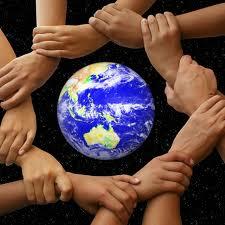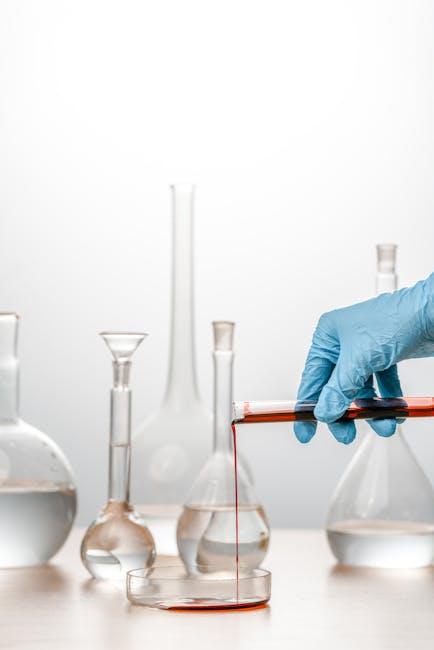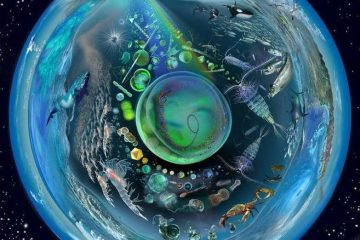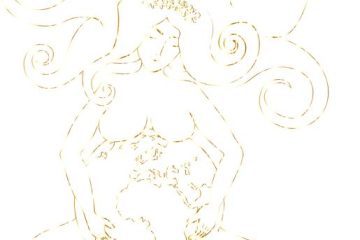Step into the intriguing world of the Gaia Hypothesis, a profound theory that delves into the interconnectedness of all living organisms with the Earth itself. As we explore the intricate web of relationships between the planet and its inhabitants, we uncover a new perspective on how life and the environment coexist in harmony. Join us on a journey of discovery as we unravel the mysteries and wisdom that the Gaia Hypothesis has to offer.
Table of Contents
- Exploring the Gaia Hypothesis: A Paradigm Shift in Understanding Earth
- The Interconnectedness of Life Forms: Gaia Hypothesis Unveiled
- Applying Gaia Hypothesis to Environmental Conservation Efforts
- Embracing Gaia Hypothesis: Practical Steps for a Sustainable Future
- Q&A
- Key Takeaways
Exploring the Gaia Hypothesis: A Paradigm Shift in Understanding Earth
The Gaia Hypothesis proposes that the Earth functions as a self-regulating organism, maintaining conditions necessary for life to thrive. This idea challenges traditional views of Earth as a passive environment and suggests a dynamic interconnection between living organisms and their environment.
<p>Through the lens of the Gaia Hypothesis, Earth is seen as a complex system where feedback loops and interactions between living organisms, oceans, atmosphere, and land shape the planet. This paradigm shift highlights the delicate balance and resilience of our planet, emphasizing the importance of preserving and nurturing our home for the well-being of all life forms.</p>
The Interconnectedness of Life Forms: Gaia Hypothesis Unveiled
Exploring the intricate web of life on our planet unveils the profound interconnectedness of all living beings, echoing the essence of the Gaia Hypothesis. This theory, proposed by James Lovelock and Lynn Margulis, delves into the idea of Earth as a self-regulating, living organism where various life forms interact to maintain a delicate balance.
**The Gaia Hypothesis reveals how ecosystems, oceans, and the atmosphere are interconnected, each playing a vital role in sustaining life on Earth.** From the lush rainforests teeming with biodiversity to the vast oceans teaming with marine life, every organism contributes to the overall health of the planet, showcasing the beauty of harmony within nature.

Applying Gaia Hypothesis to Environmental Conservation Efforts
By embracing the Gaia hypothesis in environmental conservation efforts, we can shift our perspective from viewing Earth as a collection of individual components to recognizing it as a single, interconnected system. This holistic approach encourages us to consider the planet as a living organism where all parts work together to maintain balance.
Applying this concept to conservation strategies can lead to more effective interventions that focus on preserving the harmony within ecosystems. By nurturing biodiversity, reducing pollution, and promoting sustainable practices, we can work towards fostering a healthier planet for current and future generations.

Embracing Gaia Hypothesis: Practical Steps for a Sustainable Future
When it comes to sustainability, embracing the Gaia hypothesis can offer valuable insights into fostering a harmonious relationship with our planet. By recognizing Earth as a self-regulating organism, we are prompted to take proactive steps towards a more sustainable future. One practical approach is to prioritize regenerative practices that aim to restore and replenish the resources we rely on.
<ul>
<li>**Cultivate Regenerative Agriculture:** Supporting regenerative farming techniques can help rebuild soil health, sequester carbon, and promote biodiversity.</li>
<li>**Reduce Single-Use Plastics:** Opt for reusable alternatives to minimize plastic waste and its detrimental impact on the environment.</li>
<li>**Embrace Renewable Energy:** Transitioning to renewable sources like solar or wind power can significantly reduce our carbon footprint.</li>
</ul>
<p>Another essential step is to prioritize conservation efforts by preserving natural ecosystems and wildlife habitats. By protecting biodiversity hotspots and reducing our ecological footprint, we can contribute to the overall health and resilience of the planet. Through collective action and conscious choices, we can work towards a more sustainable and thriving future for all beings on Earth.</p>Q&A
Q: What is the Gaia Hypothesis and how does it relate to environmental science?
A: The Gaia Hypothesis, proposed by scientist James Lovelock, suggests that the Earth is a self-regulating living organism where all living and non-living components interact to maintain a stable and optimal environment for life. This hypothesis views the Earth as a single, unified system capable of regulating various factors such as temperature, composition of the atmosphere, and ocean salinity to support life.
Q: How does the Gaia Hypothesis impact our understanding of nature and ecosystems?
A: The Gaia Hypothesis challenges the traditional views of nature as passive and instead portrays Earth as a dynamic and interconnected system where living organisms play a significant role in shaping the environment. This perspective highlights the delicate balance and interconnectedness of ecosystems, emphasizing the importance of preserving biodiversity and the environment as a whole.
Q: What are some criticisms of the Gaia Hypothesis?
A: Some critics argue that the Gaia Hypothesis anthropomorphizes the Earth and assigns it characteristics of a living organism, which may oversimplify the complexity of natural systems. Additionally, there is debate about the extent to which Earth can be considered a self-regulating system and whether the concept of Gaia is scientifically valid.
Q: How can the Gaia Hypothesis influence conservation efforts and environmental policies?
A: The Gaia Hypothesis encourages a holistic approach to conservation and sustainability by emphasizing the interconnectedness of all components of the environment. By recognizing the Earth as a complex and interdependent system, conservation efforts can be tailored to consider the impact of human activities on the environment as a whole, leading to more effective environmental policies and practices.
Key Takeaways
As we conclude this exploration of the Gaia Hypothesis, we are reminded of the intricate interconnectedness of our planet and all its living systems. The notion that Earth functions as a single, self-regulating organism challenges us to reflect on our roles as stewards of this fragile biosphere. Embracing the principles of symbiosis and harmony with nature can guide us towards a more sustainable future for generations to come. Let us continue to marvel at the beauty and complexity of Gaia, our shared home in the cosmos, and strive to nurture and protect it with reverence and care. Thank you for joining us on this enlightening journey into the heart of the Gaia Hypothesis.



0 Comments